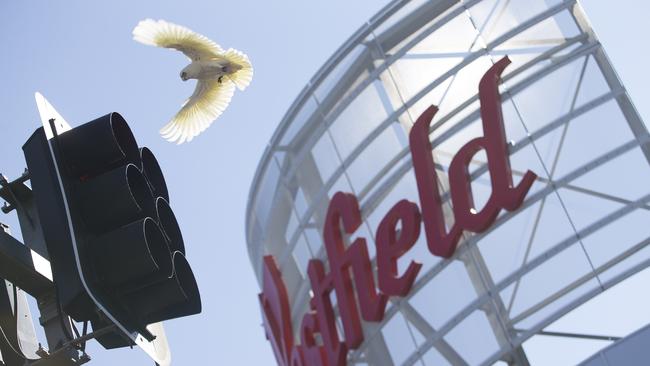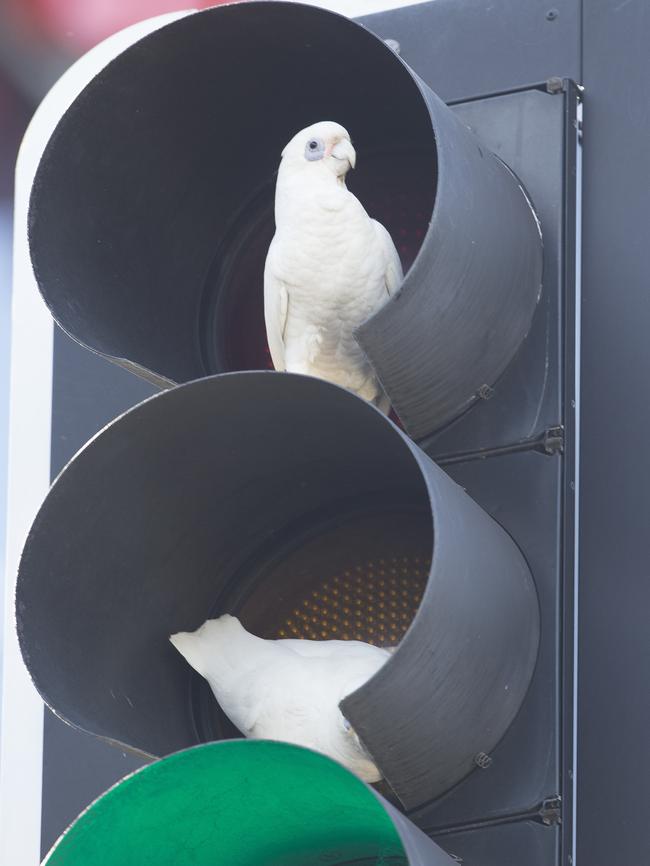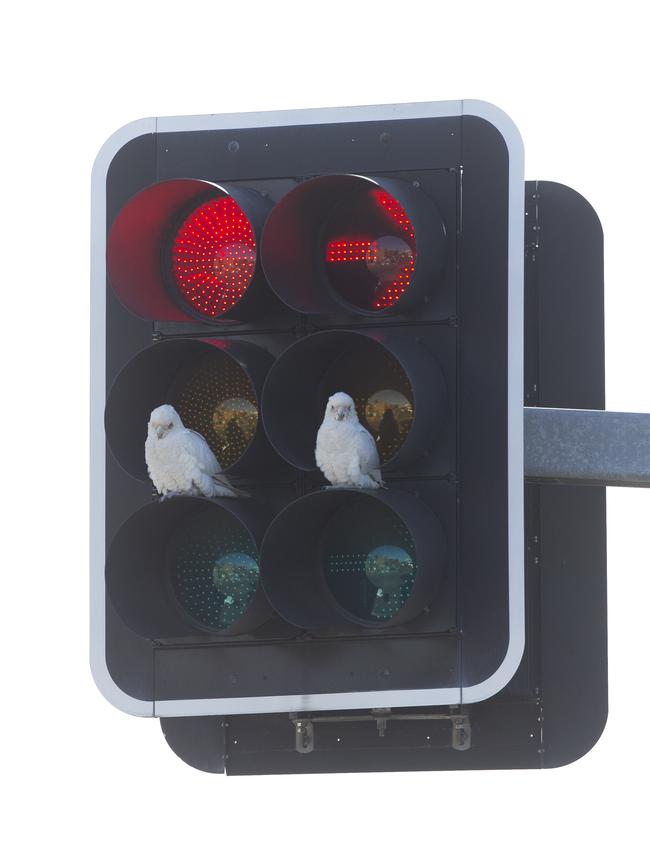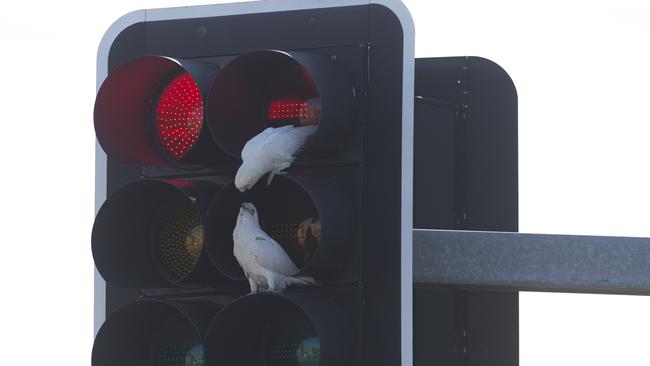Birds nesting in unconventional items thanks to Sydney’s urban sprawl
IT’S breeding season for Australia’s birds and, with urban sprawl continuing to take over their native environment, they are looking for anywhere to nest. Literally anywhere.
Liverpool
Don't miss out on the headlines from Liverpool. Followed categories will be added to My News.
- Spectacular bird performance at Sydney Royal Easter Show
- Orphan birds given show debut
- City slickers get up close with Australia’s birdlife
- Super cute baby barn owls join team
URBAN sprawl is forcing birds to find unconventional nesting spots in Sydney.
Liverpool Leader photographer Melvyn Knipe captured a couple of little corellas trying to make a set of traffic lights near Westfield Liverpool home this week.
Bird expert Ravi Wasan said there was a shortage of tree hollows and the birds were getting desperate.
“They’re so desperate they’re using things they wouldn’t normally use. Like chimneys, rubbish bins, Salvo drop off bins and traffic lights,” he said.
“They’re trying to find the best thing to breed in that is dark and has a hollow entrance — anything that meets that description.
“Finding a nest is part of the courtship and ritual to start breeding.”

Mr Wasan said they “shop around” to see what’s available and people shouldn’t see these birds as a menace.
“It’s a plea for more nesting. There must be nothing out there,” he said.
“With urban development and new housing estates, many trees are cut down. A hollow in a tree can take upwards of 60 years to happen.
“Replacing these big trees with two-year-old trees ... it will take a long time for them to want to nest there.”


Mr Wasan said the birds were creatures of habit, returning to where they bred and nested last, often not travelling far. He said the birds you see in Liverpool wouldn’t venture as far as Penrith.
He said they live together and as a pair, do everything together and stay bonded forever.
“Where those street lights are, they probably had a tree not far from there that is no longer there,” he said.
“It’s his job to prove to her he can provide them with a home to have her eggs.
“The sad thing with these birds in Liverpool, they probably won’t have success this year. But they’ll try again next year — the urge to breed as spring comes is too strong.”

Birds are expected to start laying in the next few weeks, with successful babies being spotted at the end of November, through to January and December.
Mr Wasan said all was not lost. He said the public could do their bit to help Australia’s wildlife.
“What people can do is put nest boxes around their gardens to encourage suitable housing,” he said.


